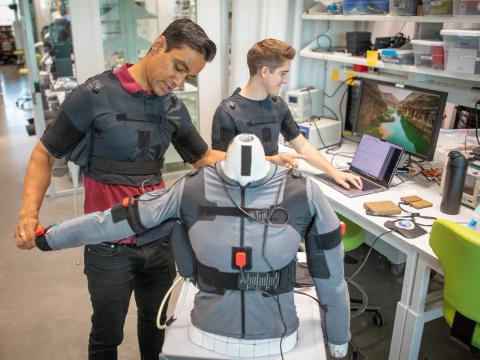Tradewind Gusts for New AI Projects
New acquisition approaches are at the heart of a Defense Department effort to speed artificial intelligence (AI) to the warfighter. Other Transactional Authorities (OTAs) are part of the defense effort, known as Tradewind, to bring AI out of the concept stage and into the hands of the warfighter.
Encouraging and extracting innovation is the main thrust of Tradewind, allowed Dave Angeletti, director of the Tradewind ecosystem, which itself is a part of the Joint Artificial Intelligence Center (JAIC). With AI offering potential applications in ways that many experts cannot yet conceive of, Tradewind is also trying to bring out new applications as well as speed familiar innovations to the field.
“Let’s get as much of a capable rich pool as we can, focusing first and foremost on the nontraditionals,” Angeletti said.
Speaking to a recent meeting of the AFCEA Small Business Committee, he stated that Tradewind has two main goals. One is to seek out and purchase ethical AI, while the other is to include all entities that might be developing it—commercial, industrial and academic.
But the key is adoption, he offered. Many programs seek out new technologies or capabilities, but simply discovering their existence is not enough. A vital purpose of Tradewind is to enable the Defense Department to adopt the AI capabilities for operational uses beyond merely acquiring them. “If you’re not going to implement and integrate into an operational system, I’m not sure where you are going to go with that.”
Using the OTA approach allows rapid procurement of AI capabilities. “In every instance where it’s plausible, we want to go from announcement to award in 30 to 60 days," he said. “That’s a short term for just about anything, let alone [the Defense Department] to do a piece of procurement.” He continued that this rapid award process is possible because it is considered a non-Federal Acquisition Regulations (FAR)-based instrument. The request for proposals (RFP) pulls in only clauses that are relevant to the topic, which in turn leads to a thin RFP.
With OTAs focused on finding nontraditional organizations, this approach fits perfectly into the goal of Tradewind’s quest for innovative AI. Angeletti stated that Tradewind works to deliver three principles on every case: rapid AI delivery, AI-unique tools and processes, and direct access. The rapid delivery principle is addressed by the awarding of prototype agreements in less than 60 days. For tools and processes, Tradewind provides a decentralized, automated process that includes customized tools, AI-unique contracting guidance and logistics solutions. This takes shape within the acquisition process that Tradewind is developing for the JAIC. And Tradewind offers direct access to AI subject matter experts and a broad network of AI providers across the spectrum.
“What we seek to do at Tradewind is to get those folks mixing with each other as much as possible,” Angeletti declared.
He noted that Tradewind is leveraging a third-party platform known as Vulcan that was developed for the U.S. Special Operations Command. Vulcan will serve as Tradewind’s competition engine for proposals to be submitted for evaluation. And, AI capabilities will be applied to Vulcan to shrink the process time.
Throughout all, three aspects loom large, Angeletti said. Speed is one, and agility is even more important. But above all, responsibility is the top aspect. These three form the prism through which the JAIC views all the opportunities that are presented.
And Angeletti offered that failure does not necessarily represent defeat. If a prototype meets all the required tenets of fiscal, legal and ethical responsibility yet is not successful, its failure serves to prove a negative. Sometimes byproducts create workflow inventions, he pointed out.
Another shifting wind is that many large traditional primes are trending toward seeking out nontraditional companies with which to work—and not as project leads over the smaller firms, Angeletti observed. Having these large traditional firms asking to be subs to the nontraditional companies is a huge change that can help bring out prototypes from these innovation fonts.
Ultimately, the end user—the warfighter—must be the focus, he allowed. Tradewind seeks to include end-user communities as early as possible in the process to improve rapid implementation.





Comments